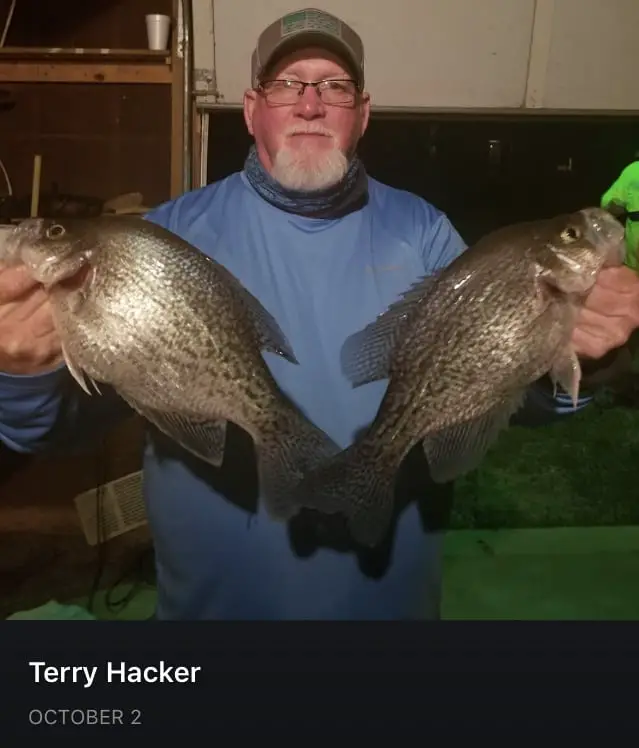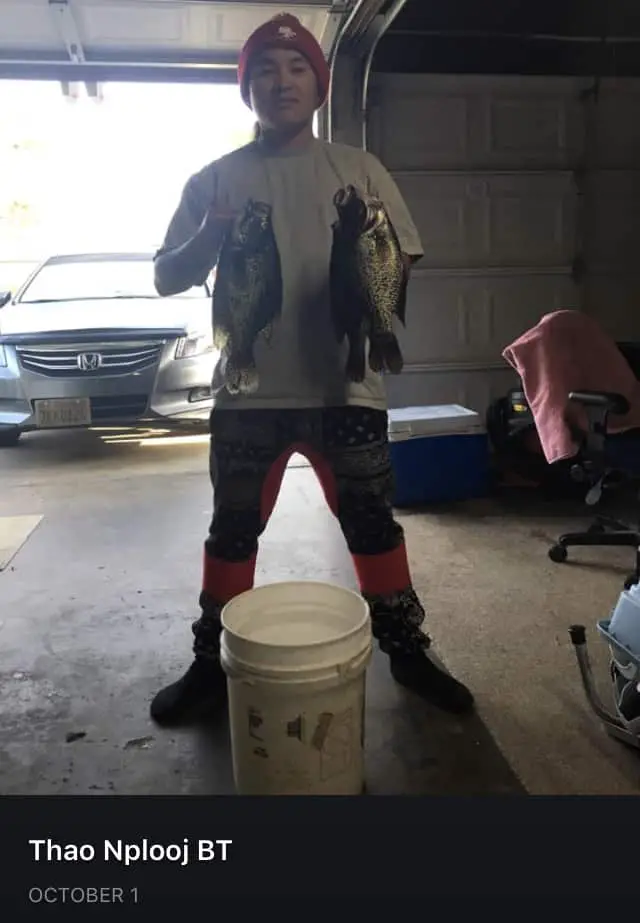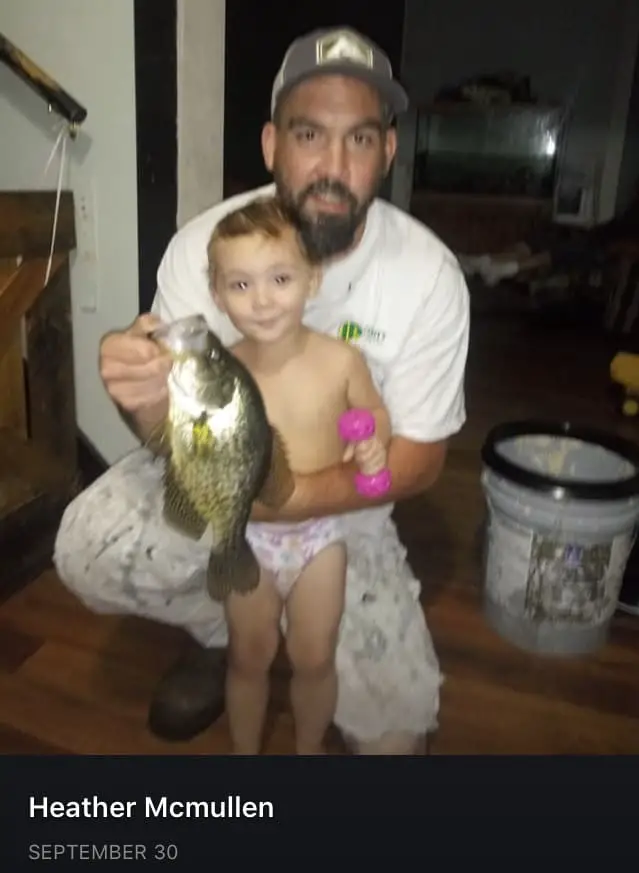What do I need to catch crappie?
So, you are thinking about going fishing, or taking a week long vacation to a popular lake somewhere to try to catch the sneaky and elusive crappie. You want to be as prepared as you can and you want to get the best bait (and other equipment) to have a successful trip. Today, I am going to answer that all important question for you: What do you need to catch crappie?

The information that I am going to provide you with has been thoroughly researched and obtained from multiple sources all over the internet, coupled with my own experiences. The mission is to give you the most comprehensive information that I can on the equipment that you will need to catch crappie. So sit back, relax and lets get started.
If you would like to find a way to make some money by fishing and writing about it or making videos about it like I am doing here, check out the guys that can teach you how to do it here.
Select a Rod
First thing I think we are going to go over is the type of fishing rod that is best for catching crappie.
To maximize your crappie fishing experience it is best to use an ultralight or light rod and reel, spinning combo. Pair this with a light line and you will have a rig with finesse and versatility. There are four main things to look at when you are purchasing a rod:
- Rod Length
- Action
- Power
- Material
Rod Length: a longer rod usually means that you will be able cast farther out into the open water.
Action: this is the speed that the tip of the rod returns back straight after a flex. With a fast action rod the flex point is towards the tip of the rod. With a slow action, the flex point is going to be closer to the handle of the rod.
Power: this is more or less how stiff the rod is. There are multiple rod powers to choose from when buying a rod; ultralight, light, medium, medium-heavy, and heavy.
Material: there are 3 options that rods are normally made from. Fiberglass, graphite (also known as carbon fiber), and a hybrid of both together. Fiberglass is heavier and less sensitive than graphite. It is also more durable and easier on the pocket book.

Rod Selection Continued
When you decide to purchase your rod for crappie fishing, you are going to find thousands to choose from. Here we are going to give you the 2 best options.
One is perfect for beginners, and the other is a little more advanced, but they will both produce lots of crappies in the bucket.
Cane Poles: these are the most simplistic rod that there is on the market. There is no reel, just a rod and a line holder. Perfect for beginners of all ages.
One big advantage to using a cane pole to catch crappie is that they allow for precise and vertical jigging. Yes, you are missing some advantages of a rod and reel combo but a cane pole will put your jig or minnow exactly where you want it to go which is a bonus if you are fishing in vegetation or heavy cover.
You will not have to worry about your bait getting tangled, because you are not reeling it in. It is just a quick lift up, and your bait/lure is out of the water and you are ready to cast again. Cane poles can range from 7-23 feet in length with the power of the rod being between a ultralight and a medium.
Spinning Rods: when choosing a spinning rod and reel, you want something in the 5-7 foot range with a medium to slow action and an ultralight to light graphite rod.
Five to seven feet is a good balance between portability, casting distance, and weight. You want to purchase a slow or medium action because of the crappies mouth. They are so paper thin, and a heavy pole will make it more likely to tear the hook right through their mouth.
Crappie is one of the smaller species of fish and that is why an ultralight or light rod is recommended. Graphite or fiberglass in this case because they are more sensitive and lighter weight. This will work in detecting the soft finicky strikes of the crappie.
Presentation
Now that you have a general idea on the rod that is best for catching crappie, lets move onto the presentation. We are going to take a look at jigs, lures, and live bait. I will cover what they are, how they work and our top pick in each section/category.
Lures: a fishing lure is a type of artificial bait which is designed to attract a fish’s attention. Here are a few of the top types of lures that have been proven to catch crappie.
– Tubes: one of the favorites used by crappie fishermen, the tube. Tubes are very durable with an angler being able to catch 20-30 fish on 1 single tube. These are also popular because you do not need to worry about getting them snagged and breaking your line. Which in turn, saves you a little bit of money. Our top pick is Johnson Crappie Buster Shad Tube.
– Spinners: spinners are basically a small jig head with a small spinner blade dangling below. This gives the bait a slightly different action in the water and adds a little ‘flash’ to help get their attention.
Spinners should be used near the bottom of the lake/river with a slow retrieve. Try using slow and steady retrieve or a lift and fall retrieve, if neither work then combine the two and hook that crappie.
The smaller spinner for fishing a crappie, the better. Spinner blades are made of gold or silver and be dimpled or smooth. The top pick here is Mepp’s Aglia Spinner Treble Hook.
– Crank baits: these are used to try to entice a reaction from the lazy, summertime crappie. You want to cast and retrieve at a decent speed. Some anglers use these behind their boats, where legal.
Crank baits snag easily and therefore are not recommended for the beginner fishermen. Crank baits are best served by using them around the edges of cover; brush piles, stumps, and weed beds. The top crank bait is the Strike King Bitsy Minnow Bait.
Lets now move onto the jigs that are used to catch crappie. Jigs are a type of lure that has a lead sinker with a hook molded into it and they are covered by a soft colored body.

Jigs
A jig is intended to create a vertical jerking motion which attracts the crappie. Jigs come in a wide variety of colors, shapes, and sizes/weights.
A jig-head can be tipped with a plastic grub, wax worm, or minnow to add to the enticement. Some jigs are made with a furry body and tails made of feathers, such as our top jig pick the Eagle Claw Marabou Jig.
Live Bait
We have saved the best, and easiest for last. Live bait. What fish doesn’t like live bait? It is what they naturally eat everyday. No matter what technique a fisherman is using, most swear by live bait to catch crappie.
The diet of a crappie is quite varied because they are not a picky eater. If it is alive, they are going to try to get it from you. Crappie like to eat minnows, worms, night-crawlers, insect larvae, and even crayfish.
One of the top picks by anglers is the Giant mealworms and second on the list is fat and juicy grubs.
Well, that is it for you today. I hope that I have provided you with all of the information that you need as you begin your journey to catch a crappie. Remember safety first and Happy Fishing!
Grab more tips and be informed about new posts in my monthly letter. Enter email below.
[wpforms id=”408″ title=”false” description=”false”]

